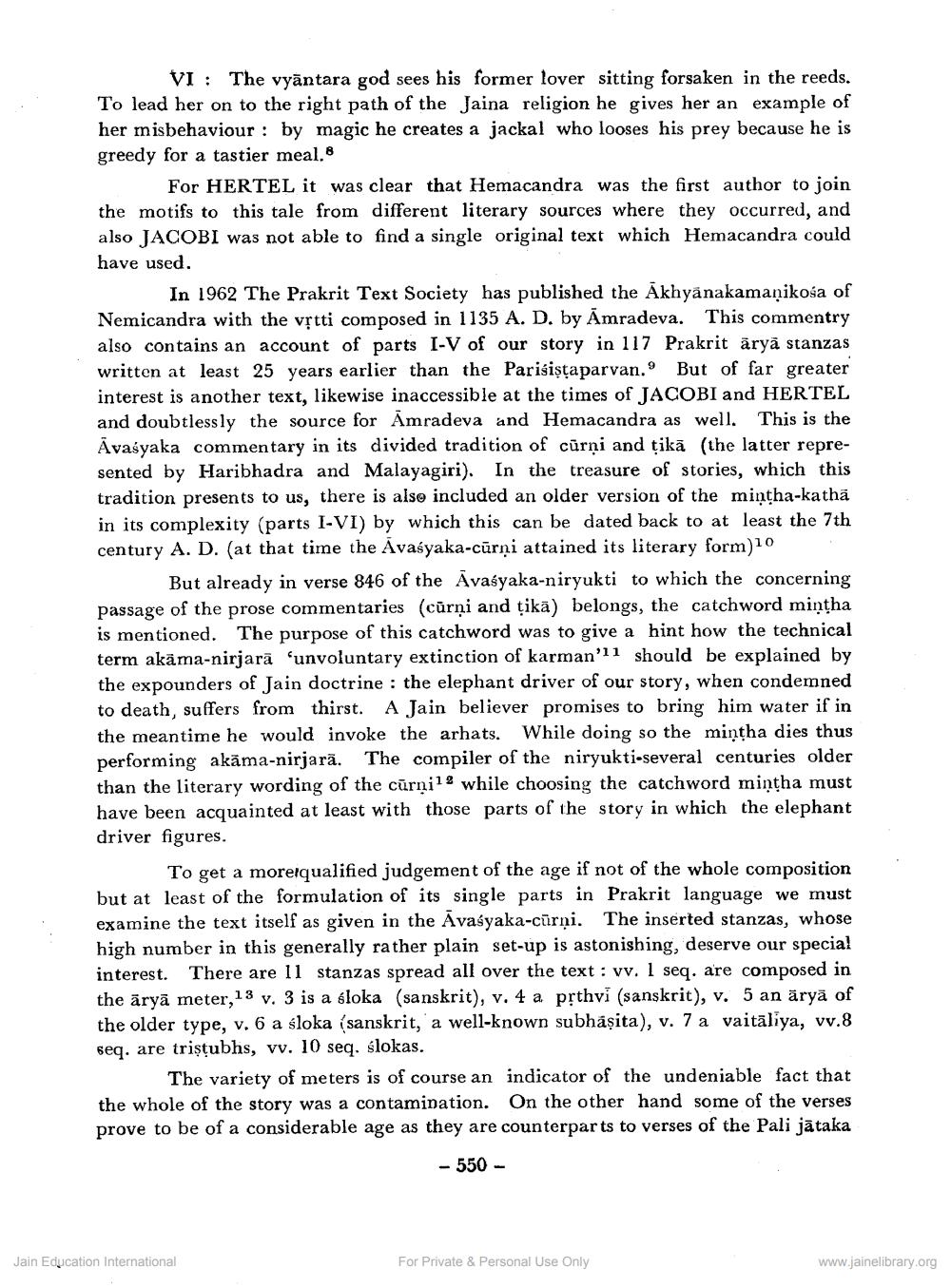Book Title: Tale of Elephant Driver in Avashyaka Version Author(s): Edhild Maite Publisher: Z_Kailashchandra_Shastri_Abhinandan_Granth_012048.pdf View full book textPage 2
________________ VI The vyantara god sees his former lover sitting forsaken in the reeds. To lead her on to the right path of the Jaina religion he gives her an example of her misbehaviour: by magic he creates a jackal who looses his prey because he is greedy for a tastier meal. For HERTEL it was clear that Hemacandra was the first author to join the motifs to this tale from different literary sources where they occurred, and also JACOBI was not able to find a single original text which Hemacandra could have used. In 1962 The Prakrit Text Society has published the Akhyanakamaṇikosa of Nemicandra with the vṛtti composed in 1135 A. D. by Amradeva. This commentry also contains an account of parts I-V of our story in 117 Prakrit äryä stanzas written at least 25 years earlier than the Parisistaparvan. But of far greater interest is another text, likewise inaccessible at the times of JACOBI and HERTEL and doubtlessly the source for Amradeva and Hemacandra as well. This is the Avasyaka commentary in its divided tradition of carni and tika (the latter represented by Haribhadra and Malayagiri). In the treasure of stories, which this tradition presents to us, there is also included an older version of the mintha-kathä in its complexity (parts I-VI) by which this can be dated back to at least the 7th century A. D. (at that time the Avaiyaka-cürņi attained its literary form)10 But already in verse 846 of the Avasyaka-niryukti to which the concerning passage of the prose commentaries (carni and tika) belongs, the catchword mintha is mentioned. The purpose of this catchword was to give a hint how the technical term akama-nirjarä 'unvoluntary extinction of karman'11 should be explained by the expounders of Jain doctrine: the elephant driver of our story, when condemned to death, suffers from thirst. A Jain believer promises to bring him water if in the meantime he would invoke the arhats. While doing so the mintha dies thus performing akāma-nirjarä. The compiler of the niryukti-several centuries older than the literary wording of the carni1 while choosing the catchword mintha must have been acquainted at least with those parts of the story in which the elephant driver figures. To get a more qualified judgement of the age if not of the whole composition but at least of the formulation of its single parts in Prakrit language we must examine the text itself as given in the Avasyaka-curai. The inserted stanzas, whose high number in this generally rather plain set-up is astonishing, deserve our special interest. There are 11 stanzas spread all over the text: vv. 1 seq. are composed in the äryä meter,13 v. 3 is a sloka (sanskrit), v. 4 a pṛthvi (sanskrit), v. 5 an arya of the older type, v. 6 a sloka (sanskrit, a well-known subhasita), v. 7 a vaitaliya, vv.8 seq. are triṣṭubhs, vv. 10 seq. slokas. The variety of meters is of course an indicator of the undeniable fact that the whole of the story was a contamination. On the other hand some of the verses prove to be of a considerable age as they are counterparts to verses of the Pali jātaka - 550 - Jain Education International For Private & Personal Use Only www.jainelibrary.orgPage Navigation
1 2 3 4 5 6 7 8 9 10 11 12
